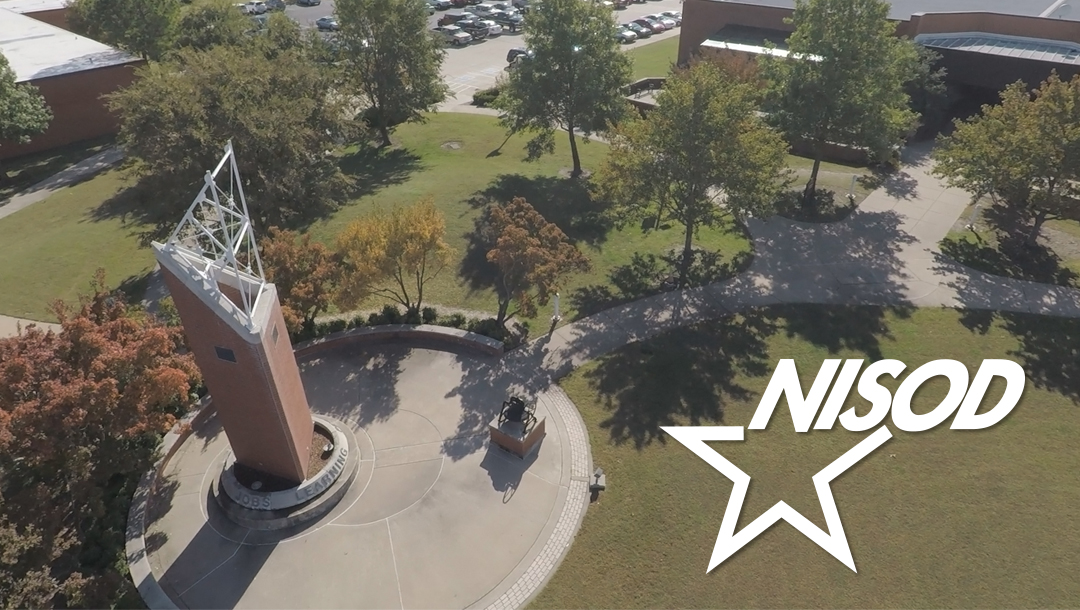
The 2021 National Institute for Staff and Organizational Development (NISOD) Excellence Awards have been announced, recognizing seven OSU Institute of Technology staff members.
The 2021 co-winners for the category of Collegiate Project are staff members: Russell Alsover, AJ Carter, Bob Henson, Dr. Kevin Hulett, Kyle McCulloch and Joe Stephens for the Campus Fiber Project.
Sonya Richardson was recognized as a winner in the category of Service to OSUIT and Surrounding Community Award for her Visual Resources initiative.
The NISOD Excellence Awards were established in 1991 to provide NISOD-member colleges with an opportunity to recognize individuals doing extraordinary work on their campuses. Each year, NISOD member colleges submit the names of men and women who have demonstrated an outstanding commitment and contribution to their students and colleagues.
Excellence Award recipients will be celebrated during NISOD’s annual International Conference on Teaching and Leadership Excellence, which will take place virtually this year, April 28-30.
Each award recipient will receive a specially cast, pewter medallion hung on a burnt-orange ribbon. The names, titles and colleges of all Excellence Award recipients are included in a special booklet that features congratulatory ads from many of the recipients’ colleges.
Collegiate Project
Technology Services and Physical Plant were involved in a campus-wide update of the original fiber network to a single mode fiber network, which is more capable of meeting the needs of OSUIT’s increasingly internet-based teaching and learning environment.
The first and last time fiber was installed on the campus was the mid 90’s. Until this upgrade, the fiber network used multi-mode fiber, which was the standard at the time, but the campus had reached the maximum bandwidth, and there were distance limitations. This resulted in problems that if a building would lose power, then the buildings downstream would lose internet and created bottlenecks.
Over the last several years, Dr. Kevin Hulett, vice president of Technology Services, has been working with the Technology Services team to plan, acquire quotes, and implement the project as well as with Jim Smith, vice president of Fiscal Services, and OSUIT’s grant team, associate vice president Charles Harrison and grant writer Anna Dinsmore-Hearne, to apply for grant funding for this significant project.
“The most challenging part of the project was locating funding for such a large project,” said Hulett.
Funding this project required a coordinated effort between all schools on campus. Every department donated $75,000 to this project.
“This fiber project updated our fiber and network switches on campus to a state where we can interact with each other on campus and with the world, leveraging hundreds of times greater data transfer than the previously existing network allowed,” said Hulett. “It also allowed the move from legacy telephone technology to IP phones which communicate using our IP network. This has allowed greater use of cloud services and website content consumption as well as real-time video interaction for meetings and course delivery, which became essential and ubiquitous as we entered the pandemic.”
Kyle McCullouch, network architect and project manager and AJ Carter, network technician, said this was a rewarding project.
“Knowing that OSUIT now has a strong network infrastructure in place is very rewarding,” said McCulloch. “This network will allow students to achieve their goals for years to come. I designed this system to be future proof. In 10 years, if we need 100Gbs to each building, we can.”
This was a team effort among the departments. Physical Plant assisted the team in ground locates to ensure the underground team knew where everything was located and provided prints, so they knew how to get fiber to each building.
“Everyone functioned as a team and worked together on this project, which negated any challenges which could have arisen,” said Joe Stephens, former Physical Plant staff. “The most rewarding aspect of the project was knowing that we all worked together to make it happen. We completed a project that would provide a benefit to the university for years to come.”
Service to OSUIT and Surrounding Community
Over the last year, the campus was faced with helping others while adhering to COVID-19 standards. Sometimes this meant helping someone on the other side of town or even state without being able to help them face to face. The Bursar’s office implemented various how-to videos recorded through Zoom that allow them to show faculty, staff and students how to complete tasks and duties.
“We did not want students and parents to lose that personal touch that we provide at OSUIT,” said Sonya Richardson, bursar. “We were able to give them a voice and visuals on how to complete a task they were required to do but now from home without assistance.”
These videos were published online on the OSUIT website for parents and students to access items they may need assistance on. There were also uploaded to YouTube so they could send the link through text, email, save for internal training opportunities and various other ways to communicate information.
“One of my personal favorites is an out of office message we set up with a QR code that students could scan if they were in the building, but we were not open,” said Sonya Richardson, bursar. It would lay out basic information about what we do and how to contact us. Students could get a lot of information off of one link.”
These videos are also utilized now in training new employees on how to achieve tasks in the office.
“We find these visual resources to be very beneficial, and we’ve already had three videos in the Bursar’s office made this year for training internally,” said Richardson. “It offers something tangible that they can refer to if needed.”
“I feel very blessed and thankful to be recognized for these resources. I spent a lot of time on making some of the videos, and it is nice that it is not only being utilized, but people notice!”
